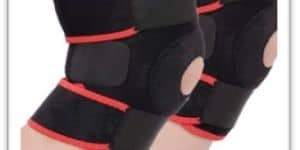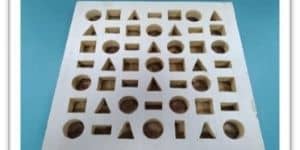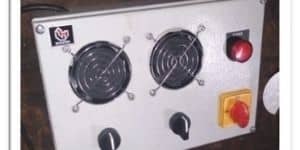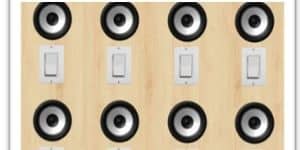DOJO is a special facility that prepares Team Members with the skills and knowledge to succeed. The Training Staff and the DOJO training tools are well prepared to effectively teach the various training programs at ATTC.
The DOJO has several hands-on training stations that help to improve the Team Member’s skills, while interacting with the various tools and techniques. Our goal is to be sensitive to the Team Member’s point of view and reinforce two-way communication by making the training simple, easy and specific.
- Basic Skill Training
- Hands-on Skill Training
- Advance Training
WHAT IS DOJO
DOJO (अखाडा ) is a place to practice. This is a Japanese word meaning let’s do it. The DOJO center mainly focuses on imparting practical training, simulated training & game training for a specific process in manufacturing.
Genesis: One can remember that when one starts learning riding a bicycle or start learning the car, the first couple of days one has to see the pedals/accelerator/clutch/breaks to apply, and after some days of practice one can apply the breaks/clutch/pedals easily without seeing this. So What happens during the practice period: The frequent practice helps one’s senses (refer to the 5 senses of a human being) to remember the applications and thereby improvising the human body parts movement and motor control.
The same methodology of DOJO i.e. frequent practice leading to human sensory activation can be used for manufacturing process like assembly, part picking & fitting, material lifting, measuring, etc
DOJO TRAINING FOR 50% FASTER SKILL IMPROVEMENT
The DOJO centers are designed to cater 3 levels of skill improvement
- Skilling of new operators who joined recently (Skill Level 0, 1, )
- Right-Skilling on a specific process (Skill Level 2)
- Re-Skilling of the existing workforce (skill Level 3 and 4)
The innovative simulation used in DOJO can reduce the overall training & skill development lead time by 50% as compared to conventional training.
| Skill Level Upgradation | Conventional Training Lead Time | DOJO Training Lead Time |
| Level 0 to Level 1 | 8 Days | 3 Days |
| Level 1 to Level 2 | 15 Days | 8 Days |
| Level 2 to Level 3 | 45 Days | 21 Days |
| Level 3 to Level 4 | 180 Days | 90 Days |
DOJO FOR BUSINESS RESULT
One of the main focus areas of the DOJO center is to achieve business results by improving human sense and skill related. These business results are as follows :
SAFETY
PRODUCTIVITY
QUALITY
COST
There are many hand-eye coordination games that are generally put in DOJO training centers. While these game good to improve the Touch and Seeing senses, the effectiveness and relevance of the games with the actual shop-floor activity are questionable.
Any DOJO center must be aligned to achieve the business objective e.g. Productivity, Safety, Quality, and Cost by skill improvement.
SKILL MATRIX INTEGRATION WITH DOJO TRAINING
Almost all manufacturing has a skill matrix for customer audit purpose, for ISO / IATF standard requirements. However, the main purpose of any customer audit, or ISO / IATF standards is to ensure the skill matrix is updated + accurate and used for Production Planning, Weekly Off Allocation, Work Allocation, Career Progression, and Skill Improvement Plan.
Skill Matrix document is used properly will achieve remarkable improvement in skill as well as business results. Else it becomes a piece of paper that will be opened just 1 day before the customer visit/system audit.
DOJO set up, with a focus on real + required skill improvement, enables the integration of the actual & measurable skill level and the skill improvement trend of each and every employee. The integration of skill improvement is done based on the consistency of the employees’ skill level adherence in DOJO Practice
DIFFERENT DOJO SEQUENCE
- KNOW MY COMPANY
- SAFETY DOJO
- PRODUCT DOJO
- 5 SENSE DOJO
- PROCESS & MACHINE
- PRODUCTION DOJO
- QUALITY DOJO
- MAINTENANCE DOJO
- ON JOB TRAINING
- CERTIFICATION
- ERGO DOJO
- INNOVATION DOJO
DOJO 1: KNOW MY COMPANY DOJO
OBJECTIVE :
- Employees should take great pride in their association with the organization. This helps create trust and a long-lasting employee-employer relationship
EXAMPLES :
- Company Profile
- Company Vision, Mission & Value, Goal Statement
- Company Founders and History
- Company Footprint & Product Portfolio
- Customer Base & Geography Coverage
- Research & Development
- CSR Activities
- Company Policy (HR, Safety, and Others)
- Environment Policy
- Kaizen Policy
- R&R Policy
- IMS/QMS/OH&SMS/EMS/En.MS Certificates
- IT Policy
HOW TO SET UP DOJO TRAINING CENTER
1.Identify Critical Process
- Frequent Quality Issue
- Low Productivity
- Fluctuating Productivity
- Inadequate Skill
- Major Safety Concern
- Freq Cust Complaint
- Newly Added Process
- Irregular Process
- Cycle Time > TAKT
- Freq M / Power Change
2. Video Shoot
- Capture the video of the critical process. At least 10 repletion of the process is required for a better observation
- Limb Movement
- Torso Movements
- Body Posture
- Tool Usage
- Interview & feedback from the operator also should be taken
3. Develop OAT
- From the video develop the OAT (Operation Analysis Table). The duration of each elemental activity should be no more than 1 minute.
4. List Out ”Work” From Oat
- Identify the work element from the OAT which you want to convert into DOJO simulation and on which you want to train the operator
5. Refer Activity Sense Chart
- See – Measure Dimension, Observe Mark, Observe Colour, Pick and Place, Moving Object
- Hear – Sound (Vibration, Friction, Gas Exhaust, Piece Creaking, Electric Sparks, Material Touch, Impact, Leakage)
- Smell – Smell (Chemical Leakage, Material Burning, Fuel Burning, Electric Spark)
- Touch – All type of Limb Motion, Pick and Place, Feel Vibration, Weighing, Lifting, Measure Temperature, Handling Touch Material
6. Create Simulation / Game
- The Sensory Skill Improvement Game / Simulation is developed by a structured process of “Magnify – Minify – Just” which will enable the senses to adopt the skill quickly.
7. Facilitate For Skill Training
- Develop the SOPs for DOJO Training, Evaluation, Re-Skilling and On Job Training (OJT) and 5-Level Skill Matrix
8. Measure Existing Skill Level
- Measure the existing skill level of the trainee based on skill level (before the trainee goes for DOJO Training)
9. Integrate Skill Trend in S.Matrix
- The DOJO simulation while being practiced by the employees, their actual skill level, and improvement trend is to be captured in the organization skill matrix.
10. Reskilling
- Selecting the next process training for skill level 3 and 4
DOJO MANUAL
DOJO Manual is a structured document with all SOPs, Scopes, Training Methodologies, Test Administration to be followed in DOJO Center, This document is a one-stop guide for the DOJO Master / Trainer.
- Objective
- Scope
- Term & Definition
- Responsibilities Matrix
- DOJO Training Room Layout
- DOJO Training Sequence
- DOJO Room Content
- DOJO Sequence Departmental Matrix
- DOJO Training Time Chart
- Procedure for DOJO Training
- Phase 1: Preparation
- Phase 2: DOJO Training Execution Flowchart
- Phase 3: Performance Evaluation
- DOJO Assessment for Skill Matrix
- Annexure 1: DOJO History Card
- Annexure 2: Evaluation Questioner (Test Series)
- Revision History
- Authorization Note
To get a copy of the DOJO Manual, List of Equipment, SimulationCONTACT US
CASE STUDIES
DOJO Training Center Designing & Development
(Leading Wire Harness Manufacturer (Gurgaon))
Challenges : (Before Tetrahedron)
- No DOJO Room across the plant
- No Skill Up-gradation Strategy
- No flow established for proper training
Approaches :
Tetrahedron DOJO Expert team charted a One Month project plan for DOJO Training Set-Up in 1100 Sq. Meter area. Developed a 3D Simulation and process flow design validated with the management team. Roles & Responsibilities of the team developed and TMS onsite resource tracked the daily work progress. Two innovative products were developed by the TMS team which are “Sensor-Based Walking Speed Measurement “ devices and “ Standing Posture Evaluation Devices”
Results :
- DOJO Center set up within time frame
- 12 Levels of DOJO implemented
DOJO Training Strategy Integration with Existing HR Strategy
(Leading Automotive Manufacturer (Rudrapur))
Challenges : (Before Tetrahedron)
- Only Safety and Maintenance DOJO was present in DOJO room
- No awareness of DOJO Training among the Employee
Approaches :
Tetrahedron DOJO Expert team charted a One –Month project plan for DOJO Training Set-Up in 2500 Sq. Meter area. Developed SOPs and documentation of the DOJO training strategy. Implemented “DOJO Strategy Manual” including DOJO Score Card, Training effectiveness Measurement System. and linked the DOJO strategy with the Skill level of the workmen
Results :
- Department wise DOJO training sequence developed
- Skill matrix integrated with DOJO training
- DOJO On Job Training (OJT) KPIs are developed and tracked
- On Paper Performance Evaluation System Implementation
- Video-based & Poster based learning system developed
GALLERY








TESTIMONIAL
Office Address
- Main Office:- Flat No. 002, Building P5, Ushay Towers, Sector 61, Kundli Sonipat, Haryana 131023
Office Extension
- 3rd Floor, 108 Pocket 2, Sector 16B, Rohini, Delhi, 110089
Regional Office (East)
- Unit 630, located at DLF Cybercity, Infocity Park, Patia – 751024, Bhubaneswar, Odisha (India)
- +91-7011219709, +91-7042140046
- [email protected]
Quick Links
Expertise
Manufacturing Management Consulting


























